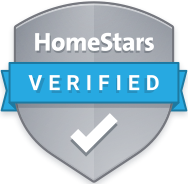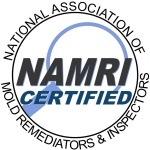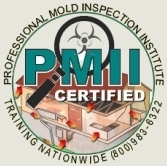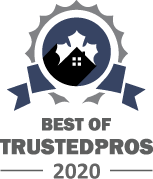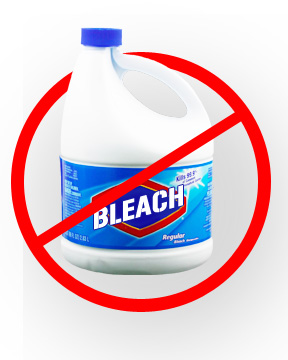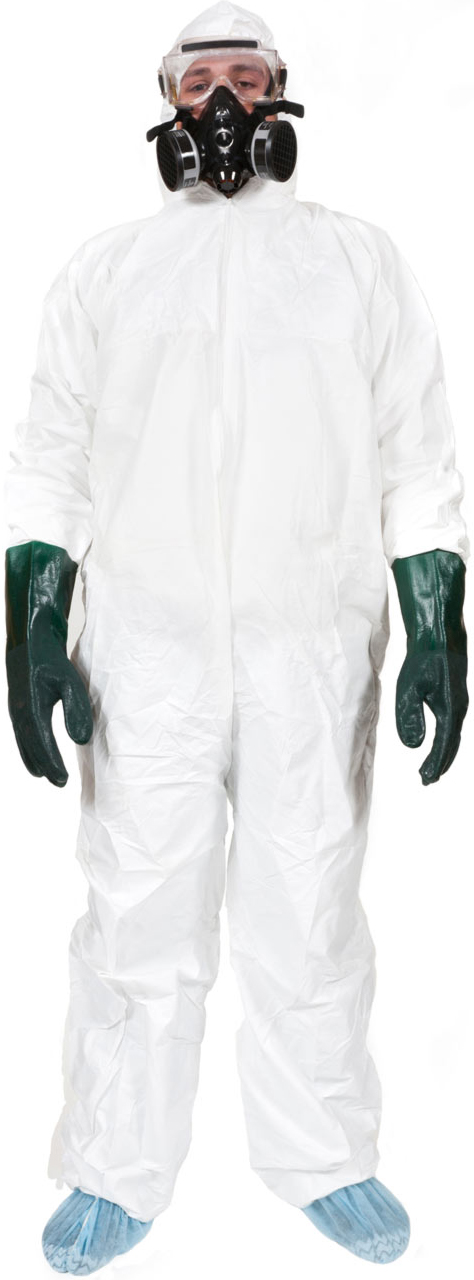Mississauga Mold Removal Services
Performed by licensed, certified and experienced mold remediation technicians.
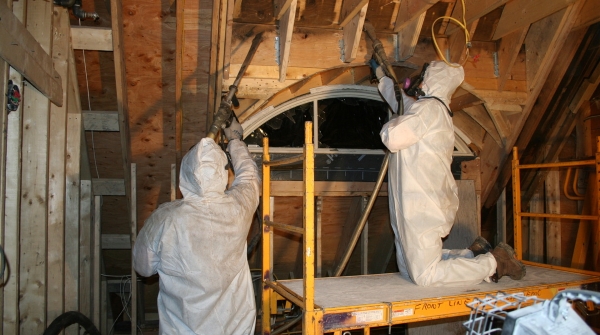
Utilizing state of the art equipment and protective wear, our
Mississauga mold removal crews follow strict remediation and safety
guidelines and use non-toxic, environmentally friendly formulas
to safely and effectively treat even the most extensive of mold
infestations. Our
company has invested in the latest mold remediation technology
to enhance both accuracy and time efficiency. This allows us to
achieve a quicker turnaround for Mississauga
homeowners, without compromising
safety or work quality. We are fully
equipped with the highest grade air HEPA vacuums, industrial
sprayers, air scrubbers, commercial dehumidifiers, air movers,
and containment barriers.
Attic & Basement Mold Removal
Using only
safe, non-toxic, environmentally friendly formulas. We never use bleach.
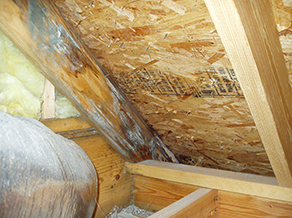
![]()
![]()
![]()
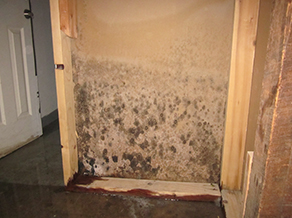
Kitchen & Bathroom Mold Removal
Using only
safe, non-toxic, environmentally friendly formulas. We never use bleach.

![]()
![]()
![]()
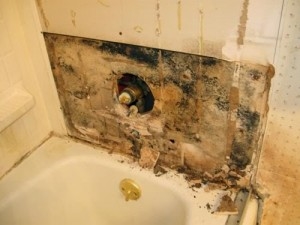
Licensed & Certified Mold Professionals
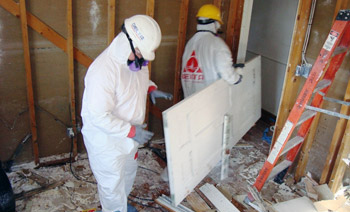
![]() Our
Mississauga Mold Remediation technicians are
certified by the Professional Mold Inspection
Institute (PMII), the National Association of Mold
Remediators and Inspectors (NAMRI), as well as the
Institute of Inspection, Cleaning and Restoration
Certification (IICRC). All work is carried out in
strict compliance with the Ontario Health and Safety
Act and we adhere to all regulations set by the
Ontario Ministry of Labour and the Ontario Ministry
of the Environment.
Our
Mississauga Mold Remediation technicians are
certified by the Professional Mold Inspection
Institute (PMII), the National Association of Mold
Remediators and Inspectors (NAMRI), as well as the
Institute of Inspection, Cleaning and Restoration
Certification (IICRC). All work is carried out in
strict compliance with the Ontario Health and Safety
Act and we adhere to all regulations set by the
Ontario Ministry of Labour and the Ontario Ministry
of the Environment.
Highest Grade Equipment & Safety Wear
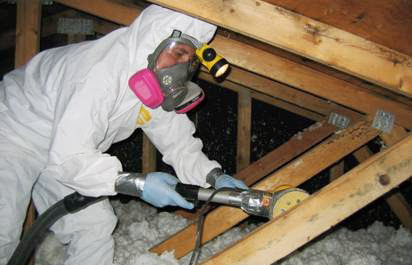
![]() We
have invested in the latest
mold remediation
technology to enhance both accuracy and time
efficiency without compromising safety or work
quality. Utilizing state of the art equipment and
protective wear, our crews follow strict remediation and
safety guidelines and use non-toxic, eco-friendly formulas to safely and effectively treat
even the most extensive of Mississauga mold infestations.
We
have invested in the latest
mold remediation
technology to enhance both accuracy and time
efficiency without compromising safety or work
quality. Utilizing state of the art equipment and
protective wear, our crews follow strict remediation and
safety guidelines and use non-toxic, eco-friendly formulas to safely and effectively treat
even the most extensive of Mississauga mold infestations.
Trusted Family-Owned & Operated Business
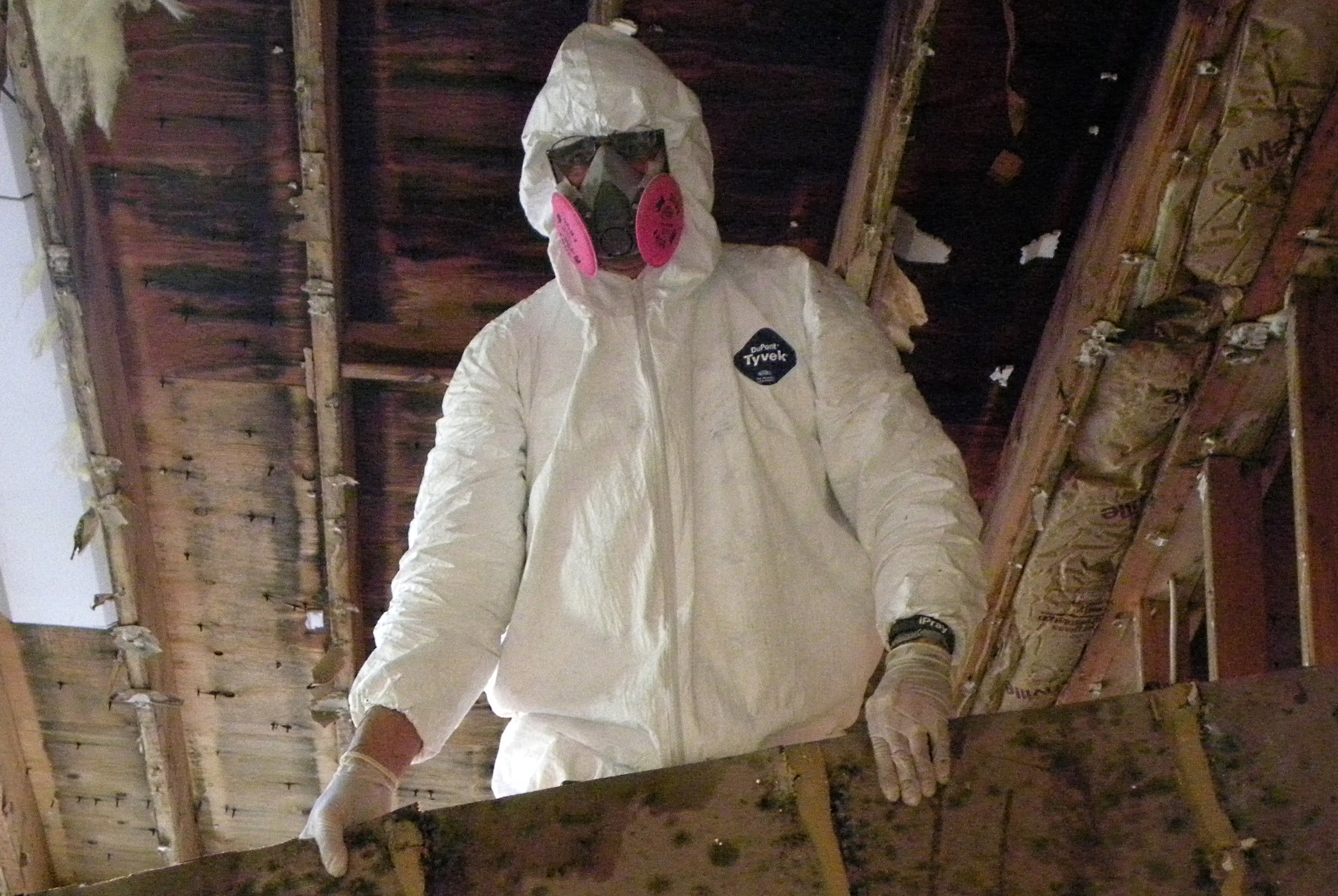
![]() Our
mission is to create healthier indoor environments
for homeowners and tenants, while maintaining the
highest standards of safety, honesty, competence,
transparency and customer care. Our goal is to
ensure that you always have peace of mind, knowing
you and your loved ones are safe from the harmful
effects of mold exposure. We are licensed,
certified, insured, and BBB accredited with a
perfect A+ Rating.
Our
mission is to create healthier indoor environments
for homeowners and tenants, while maintaining the
highest standards of safety, honesty, competence,
transparency and customer care. Our goal is to
ensure that you always have peace of mind, knowing
you and your loved ones are safe from the harmful
effects of mold exposure. We are licensed,
certified, insured, and BBB accredited with a
perfect A+ Rating.
What is Mold?
We hear a lot in
the media these days about the dangers of exposure to mold, but
what is mold exactly? Mold is not a plant or an animal,
but a type of fungi. We eat some types of fungi, like many kinds
of mushrooms and the yeast we use to make bread rise. Some types
of mold are even used to make medicine, like the type of mold
that is used to make penicillin, a life-saving antibiotic. Other
types of mold can be harmful to our health, however. There are
hundreds of different kinds of mold found both indoors and
outdoors. Mold grows in damp, dimly-lit areas. Indoors, it can
often be found in places like attics, basements, crawl spaces,
and bathrooms. Mold is also common in other areas if there is a
leak in the roof, leaky windows, leaky pipes, or seasonal
flooding. Some molds commonly found indoors include aspergillus,
chaetomium, cladosporium, penicillium, and stachybotrys
(sometimes referred to as black mold, although many types of
mold are black in colour). Mold thrives in areas that are moist
and warm. Sometimes the mold growth can begin after an area has
been wet, and it never dried completely. For example, if a
basement is flooded and the carpet is never pulled up to allow
the carpet and the padding to dry completely, then mold may
start to grow under the carpet. Common places for mold to grow
include the bathroom, basement, or any area that may be exposed
to moisture from a leak, such as under the sink, in the attic,
or under a waterbed. Left untreated, mold has the potential to cause health related issues as well as serious cosmetic and structural damage to a property.
What is Mold Related Illness?
Because mold
spores are very tiny and very light, they easily become
airborne. Once floating around in the air, mold spores are
easily inhaled by anyone in the vicinity. It's not healthy to
inhale any type of mold spores, but some types of mold actually
produce toxins, known as mycotoxins, that frequently cause a
variety of health problems.
Not everyone exposed to mold develops mold related illness, and
some people are more susceptible than others, including the
elderly, the very young, those with respiratory problems like
asthma, and those with immune related disorders. Everyone, even
healthy young adults, is at risk for mold related illness if you
have a mold problem in your home, however. Even your pets can
get sick from too much mold in the home.
Some of the illnesses caused by mold include aspergillosis,
blastomycosis, histoplasmosis, coccidioidomycosis,
paracoccidioidomycosis, sporotricosis, and systemic candidiasis
(a yeast infection). Symptoms of mold related illness are
wide-ranging and include:
Headaches - Sore throats - Trouble breathing, wheezing, and shortness of breath
- A runny nose or stuffed up nose - Coughing - Sneezing - Red, itchy, watery eyes
- Asthma attacks or asthma-like symptoms in people not
previously diagnosed with the disease - Infections in the lungs, such as pneumonia and bronchitis
- Chronic sinusitis (sinus infections) - Rashes or hives - Fatigue
- Depression - Depressed immune system, causing you to get sick easily.
If you have mold in your home and have symptoms of mold related
illness, you should see your doctor for a diagnosis and
treatment. However, symptoms will likely continue, even with
treatment, until all of the mold is removed from your home.
What is Mold Remediation?
Mold remediation is
the process of removing mold and repairing mold-related damage
in the home. It's a complicated process and must be done
carefully in order to prevent further exposure to potentially
harmful mold spores. Mold can be cleaned from some materials,
like bathtubs and tile, and the surfaces disinfected. Some
materials, though, like drywall, wood, and carpeting, are
impossible to clean thoroughly and instead must be removed and
replaced.
Mold remediation is challenging in part because mold can grow in
so many out-of-sight places, including inside walls, under
carpeting, above ceiling tiles, and inside heating and air
conditioning ducts. Just locating all the mold can be difficult,
and if you miss even a little bit, it will just continue to grow
and spread. Soon you'll have a full-blown mold problem on your
hands again.
Mold removal is also challenging because the process disperses
many more mold spores into the air, increasing the risk of mold
related illness. Due to safety concerns, we recommend hiring a
mold remediation professional for the job, though it is possible
to tackle the task yourself if you're only dealing with a small
amount of mold (such as a surface area covering no more than ten
square feet) and you have no pre-existing health issues that
would increase the risk for you. If you're experiencing symptoms
of mold related illness, you should not attempt a mold
remediation job yourself, though, because you'll end up exposing
yourself to more mold and making your symptoms worse.
Common Myths About Mold
Myth #1: Only messy or filthy houses
have mold problems.
Mold spores are so minuscule that more than 250,000 can fit on
the head of a pin. Millions of these spores travel through the
air everyday and can enter almost any environment in seconds.
Mold spores tend to congregate in moisture-rich environments.
Moisture from water damage such as floods and leaks can get
inside ceilings, walls, carpets and other household staples.
This means that even the cleanest house on the block can be a
breeding ground for toxic mold.
Myth #2: There is only one type of black mold, and it's very
bad.
In actuality, there are a lot of molds that look black. The type
of black mold that made the news years ago, associated with a
lot of ill health effects, was called Stachybotrys. However,
there are many other molds that look black, and are fairly
common and generally not of concern.
Myth #3: Only black molds are bad. Other types shouldn't be
worried about.
A lot of people aren't even aware that mold can be white, or
orange, or blue, for instance. The shape, size and color of mold
are dependent upon the species of mold, the nutrient source and
the conditions under which it formed. The color has absolutely
no bearing on whether it is dangerous or not. There are some
white molds that grow on walls and other surfaces that can be
just as bad as some harmful black molds.
Myth #4: Bleach removes mold.
Bleach is generally not recommended as a fungicide (mold
killer). It works by dousing the mold in toxic levels of a
chemical. The problem is twofold: not only are humans just as
susceptible to bleach''s damaging properties, but the bleach is
generally a water-based solution. In the long run, this often
means that water penetrates the surface, giving moisture to the
roots of the mold, which happily begins to grow again. In the
case of small patches of mold, ordinary household detergent will
suffice. It is important to make sure that the area dries
quickly (ideally within 24-48 hours) so that any small bits (too
small to see with the naked eye) of mold left over don''t get
the chance to start growing again.
However, just removing the mold without fixing the water problem
will usually result in the mold coming back. Also, mold can grow
behind walls in addition to just on them, so it is important to
determine whether you''ve only dealt with a portion of the mold,
or the whole thing.
Myth #5: I can just paint over the mold to seal it up.
Actually, mold can eat the paint. Many people attempt to paint
over mold only to discover that in a few months the mold has
either poked its way through the paint, or the paint has started
peeling off. The mold really has to be removed before painting
can be done, even if you''re using "mold-resistant" paint.
Myth #6: Mold and mildew are totally different things.
Mildew is mold. It''s a word that is used generally to refer to
a few specific types of molds, but it''s still all mold.
Myth #7: Once a house has been treated for mold
contamination, it is impossible to maintain its value.
The difference between a home that loses value because of mold
contamination and one that doesn''t depends on the remediation
approach.
Mold spores are airborne particles. While they may congregate on
moist surfaces, the particles in the air remain there if
they''re not treated. Any remediation approach that fails to
decontaminate an entire structure simply fails altogether. If an
effective and conclusive remediation plan is implemented, as
well as proper moisture maintenance is employed
post-remediation, you and everyone else concerned can breath
easy because your home's indoor air quality is clean and free of
toxic mold..
Indications That You May Have a Mold Problem
If you have a mold problem, you will most
likely be able to smell it. Any musty or earthy odor is probably
an indication that mold is growing somewhere in the building.
Occasionally, you will see discolored smudges and/or blotches
that look like mold and sometimes you may see actually mold.
In some cases, indoor mold growth may not be obvious. It is
possible that mold may be growing on hidden surfaces, such as
the backside of dry wall, wallpaper, or paneling, the top of
ceiling tiles, the underside of carpets and pads, etc. Possible
locations of hidden mold can include pipe chases and utility
tunnels (with leaking or condensing pipes), walls behind
furniture (where condensation forms), condensate drain pans
inside air handling units, porous thermal or acoustic liners
inside ductwork, or roof materials above ceiling tiles (due to
roof leaks or insufficient insulation).
Some building materials, such as dry wall with vinyl wallpaper
over it or wood paneling, may act as vapor barriers, trapping
moisture underneath their surfaces and thereby providing a moist
environment where mold can grow. You may suspect hidden mold if
a building smells moldy, but you cannot see the source, or if
you know there has been water damage and building occupants are
reporting health problems. Investigating hidden mold problems
may be difficult and will require caution when the investigation
involves disturbing potential sites of mold growth.
For example, removal of wallpaper can lead to a massive release
of spores from mold growing on the underside of the paper. If
you discover hidden mold, you should revise your remediation
plan to account for the total area affected by mold growth.
You should be concerned about the growth of mold if your home
has had any of the following: a flood, a sewer back-up, an
overflowing toilet, leaking pipes, a leaking roof, leaking
windows, condensation on windows, malfunctioning appliances,
humidifiers, any other serious water-related problems.
Some of these situations can result in the growth of bacteria,
which also can cause musty odors and health problems.
Once materials become wet, mold can begin to grow within 24 to
48 hours. If your home experiences a water-related problem,
clean and dry any wet or damp areas as soon as you find them. If
you live in a rental property, immediately report water problems
to your landlord.
The earlier you can detect the growth of mold in your home, the
better a chance you have to control it. Early detection and
treatment are very important. If you smell a musty odor in your
house, start looking for the source immediately and remove it as
soon as you find it. Prevention and early detection may save you
from paying much greater cleanup and repair expenses later on.
If you own your home, damage from mold and the cost of removing
mold might not be covered by your homeowner insurance. (Read
your policy or call your insurance agent to find out.).
Common Types Of Mold Found In Homes
There are many different mold types that
can be found in homes and different health problems can occur
depending on the type of mold to which you are exposed. While
there are more than one hundred different kinds of mold
sometimes found in homes, here we'll discuss a few of the most
common.
Common Types of Mold Found in Homes
Alternaria is often found outdoors, but it also grows in
damp places indoors, like in showers or under sinks with leaky
pipes. It can also be found in buildings that have been flooded
or suffered other water damage. It spreads easily from one area
of the home to another. Exposure to alternaria can cause
allergic reactions and asthma attacks.
Aspergillus is a type of mold frequently found indoors.
It can causes allergic reactions, respiratory infections, and a
condition called hypersensitivity pneumonitis, which causes
inflammation of the lungs. More about aspergillus mold.
Aureobasidium is a mold often found outdoors, but it can
also be found in homes growing on wooden surfaces, wallpaper,
and painted surfaces. It's also often found on damp window
frames and caulking. It is pink and black in color. Many people
are allergic to aureobasidium. Follow the link for more
information on pink mold in the bathroom.
Botrytis grows in areas with high levels of humidity,
like bathrooms with poor ventilation. It can cause allergic
reactions and asthma.
Chaetomium often grows on drywall that has sustained
water damage. It produces a characteristic musty odor.
Cladosporium is a type of mold often found growing inside
homes. While most types of mold prefer warm climates,
cladosporium can grow in cool areas, too. It often grows on
fabrics, like carpets, and on wood surfaces, like cabinets and
floorboards. It can cause a variety of respiratory problems.
Fusarium is another of the mold types that, like
cladosporium, can grow and spread at lower temperatures. It's
often found growing on water-damaged carpeting and other
fabrics. It causes allergic reactions, asthma, and respiratory
infections. People with compromised immune systems are
particularly vulnerable to infections due to fusarium exposure.
Penicillium is often found growing on materials that have
been damaged by water, including carpeting, wallpaper,
insulation, and furnishings like mattresses. It's one of the
mold types that spread quickly and easily from one part of the
home to another. Exposure to penicillium can cause allergic
reactions, chronic sinus infections, and inflammation of the
lungs. Usually appears as a blue mold and/or a green mold.
Stachybotrys chartarum is often referred to as "black
mold" due to its slimy black appearance. It's sometimes referred
to as "toxic mold" although the mold itself is not toxic; it
produces toxic compounds called mycotoxins, which cause health
problems when people come in contact with them. It can cause
allergic reactions, breathing problems, chronic sinus
infections, asthma attacks, fatigue, and depression.
Stachybotrys chartarum has a characteristic musty odor and
usually grows in places that stay damp all the time, like in air
conditioning ducts where there is a lot of condensation or
around leaky pipes. Learn more about black mold in homes.
Serpula lacrymans is a yellow mold that causes "dry rot"
because it feeds on wood.
Trichoderma is often found growing on damp carpet,
wallpaper, and other wet surfaces. It produces mycotoxins
similar to those produced by stachybotrys chatarum, and it can
cause similar health problems. Many people are also allergic to
trichoderma.
Ulocladium requires a lot of water, so it frequently
grows in areas with extensive water damage, including homes that
have been flooded. It's often found growing on wet walls. Many
people are allergic to ulocladium.
Efflorescence are salt deposits that are often confused
with white mold in basement. To compare pictures of both and see
how to tell the difference, read our white mold pages.
A third party mold inspector can test your home for mold and
tell you what kind of mold is growing in your home. They can
also let you know the severity of your mold problem and locate
mold you may not have spotted.
Mold Removal in Mississauga, Ontario
GTA Mold Removal
77 City Centre Drive Unit 501 Mississauga, ON L5B 1M5
Proudly Serving: Applewood, Central Erin Mills, Churchill Meadows, Clarkson-Lorne Park, Cooksville, Creditview, East Credit, Erindale, Erin Mills, Fairview, Hurontario, Lakeview, Lisgar, Malton, Meadowvale, Meadowvale Village, Mineola, Mississauga Centre, Mississauga Valleys, Port Credit, Rathwood, Sheridan, and Streetsville.
Mississauga Related Links: City of Mississauga Portal | Mississauga on Wikipedia | Mississauga Weather


